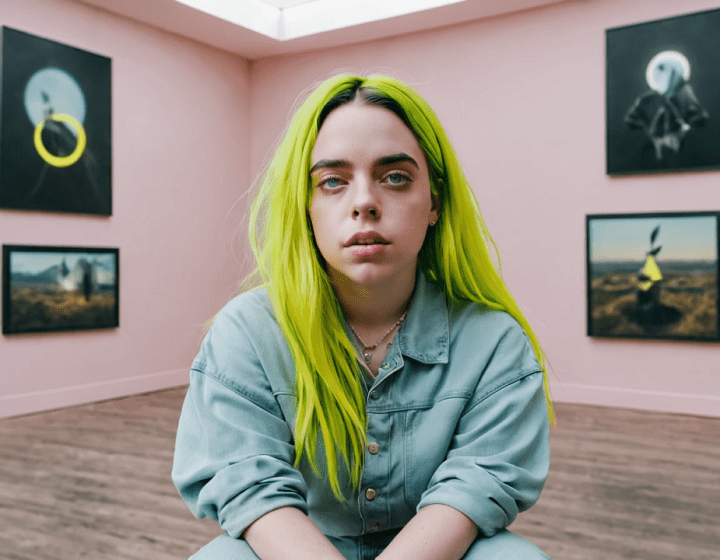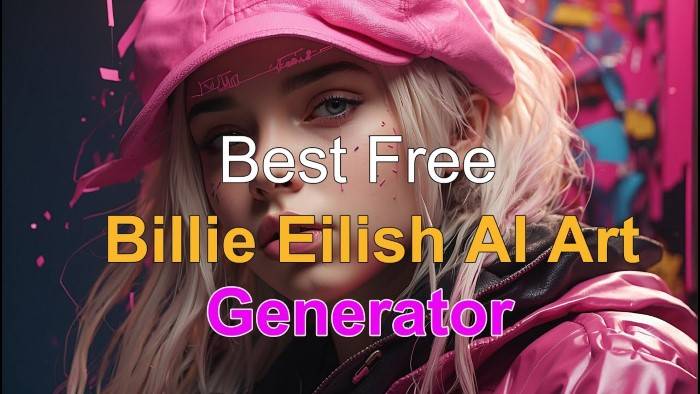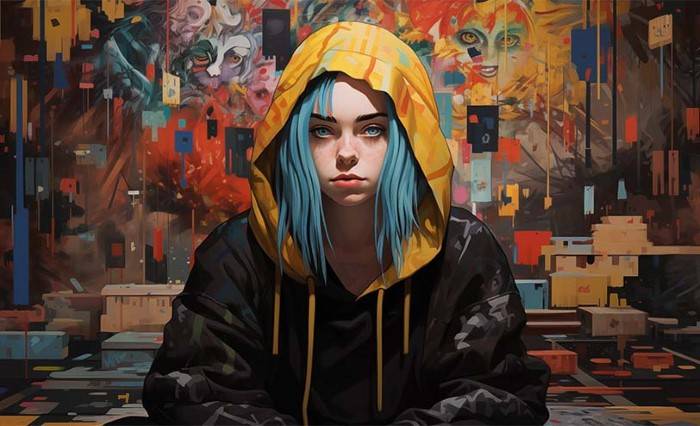In the realm where art and technology converge, a new wave of creativity has emerged, captivating audiences worldwide. One such phenomenon is the collaboration between the celebrated artist Billie Eilish and the innovative realm of Artificial Intelligence (AI) art. This intriguing amalgamation of Eilish’s avant-garde music and the cutting-edge capabilities of AI has sparked curiosity and debate within both the artistic and technological communities.
The Rise of AI in Art
Artificial Intelligence has transcended its traditional role in automation and data analysis to become a tool for artistic expression. With advancements in machine learning algorithms and neural networks, AI has gained the ability to analyze vast amounts of data and generate creative outputs that mimic human cognition. This has opened up new avenues for artists to explore and experiment with unconventional forms of expression.
Billie Eilish: A Trailblazer in Music and Style
Billie Eilish, the Grammy-winning singer-songwriter, has captured the hearts of millions with her distinctive sound and unique style. From her haunting vocals to her bold fashion choices, Eilish has redefined the landscape of contemporary pop music. With her thought-provoking lyrics and mesmerizing performances, she has solidified her place as one of the most influential artists of her generation.
The Intersection of Art and Technology
The collaboration between Billie Eilish and AI art represents a groundbreaking fusion of creativity and technology. By harnessing the power of AI algorithms, Eilish has embarked on a journey to explore new artistic horizons and push the boundaries of her craft. This intersection of art and technology has given rise to a series of experimental projects that challenge conventional notions of creativity and innovation.
Exploring the Billie Eilish AI Art Project
The Billie Eilish AI art project encompasses a series of multimedia installations, performances, and digital experiences that showcase the symbiotic relationship between human creativity and machine intelligence. Through a combination of music, visuals, and interactive elements, Eilish and her collaborators have created a multi-sensory journey that immerses audiences in a world of sound and imagery.
Key Components of the Billie Eilish AI Art Project
- AI-Generated Visuals: Utilizing cutting-edge AI algorithms, artists and technologists have created stunning visuals that complement Eilish’s music. These visuals are generated in real-time, allowing for dynamic interactions between the music and the imagery.
- Interactive Installations: The Billie Eilish AI art project features interactive installations that invite audiences to engage with the artwork on a deeper level. From touch-sensitive screens to motion-activated sensors, these installations encourage participation and exploration.
- Immersive Soundscapes: In addition to visual elements, the project incorporates immersive soundscapes that transport listeners to otherworldly realms. By combining Eilish’s ethereal music with spatial audio technology, the project creates a truly immersive sonic experience.
- Data-Driven Creativity: One of the most intriguing aspects of the project is its reliance on data-driven creativity. By analyzing Eilish’s music and lyrics, AI algorithms can generate visualizations and interpretations that reflect the underlying themes and emotions of her work.
The Impact of AI on the Creative Process
The integration of AI into the creative process raises important questions about the nature of artistry and authorship. While some may view AI as a tool for enhancing human creativity, others express concerns about its potential to replace human artists altogether. However, proponents argue that AI should be seen as a collaborator rather than a competitor, offering new perspectives and possibilities for artistic expression.
Challenges and Ethical Considerations
Despite its potential benefits, the use of AI in art also presents a range of challenges and ethical considerations. Issues such as data privacy, algorithmic bias, and the commodification of creativity must be carefully considered to ensure that AI remains a force for positive change in the artistic community. Additionally, questions of authorship and ownership may arise in the context of collaborative projects involving AI-generated content.
The collaboration between Billie Eilish and AI art represents a bold exploration of the intersection between human creativity and machine intelligence. By pushing the boundaries of conventional artistic expression, Eilish and her collaborators have created a series of immersive experiences that challenge our perceptions of art, technology, and the creative process. As we look to the future, the integration of AI into the arts holds the potential to unlock new forms of expression and inspire generations to come.




